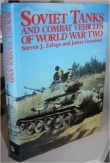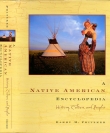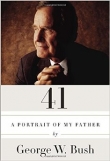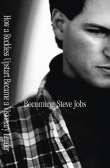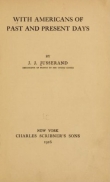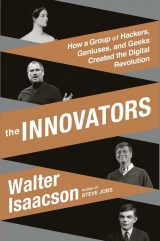
Текст книги "The Innovators: How a Group of Inventors, Hackers, Geniuses, and Geeks Created the Digital Revolution"
Автор книги: Walter Isaacson
Жанр:
Биографии и мемуары
сообщить о нарушении
Текущая страница: 17 (всего у книги 42 страниц)
It was a key step toward a direct human-computer partnership or symbiosis. “The invention of interactive computing through time-sharing was even more important than the invention of computing itself,” according to Bob Taylor. “Batch processing was like exchanging letters with someone, while interactive computing was like talking to them.”20
The importance of interactive computing became apparent at Lincoln Laboratory, the military-funded research center that Licklider helped to build at MIT in 1951. There he forged a team, half of them psychologists and half engineers, to look at ways that humans could interact more intuitively with computers and information could be presented with a friendlier interface.
One mission at Lincoln Laboratory was developing computers for an air defense system that would provide early warning of an enemy attack and coordinate a response. It was known as SAGE, for Semi-Automatic Ground Environment, and it cost more money and employed more people than the Manhattan Project that built the atom bomb. For it to work, the SAGE system needed to enable its users to have instant interactions with its computers. When an enemy missile or bomber was on the way, there would be no time for batch processing of the calculations.
The SAGE system included twenty-three tracking centers across the United States, which were connected by long-distance phone lines. It was able to disseminate information on up to four hundred fast-moving planes at once. This required powerful interactive computers, networks that could transmit vast amounts of information, and displays that could present this information in an easy-to-understand graphical fashion.
Because of his background in psychology, Licklider was called upon to help design the human-machine interfaces (what users saw on the screen). He formulated a set of theories about ways to cultivate a symbiosis, an intimate partnership, that would allow humans and machines to work cooperatively to solve problems. Particularly important was figuring out ways to visually convey changing situations. “We wanted methods of saving the air situation for successive seconds, and plotting tracks, not blips, and coloring the tracks so that we could see which was the recent information and tell which way the thing was going,” he explained.21 America’s fate might depend on the ability of a console jockey to assess data correctly and respond instantly.
The interactive computers, intuitive interfaces, and high-speed networks showed how people and machines could work together in a collaborative partnership, and Licklider imagined ways this could happen for more than air defense systems. He began to talk about what he called a “truly SAGE system” that would network not only air defense centers but also “thinking centers” incorporating vast libraries of knowledge, which people could interact with on friendly display consoles—in other words, the digital world we have today.
These ideas formed the basis for one of the most influential papers in the history of postwar technology, titled “Man-Computer Symbiosis,” which Licklider published in 1960. “The hope is that, in not too many years, human brains and computing machines will be coupled together very tightly,” he wrote, “and that the resulting partnership will think as no human brain has ever thought and process data in a way not approached by the information-handling machines we know today.” This sentence bears rereading, because it became one of the seminal concepts of the digital age.22
Licklider sided with Norbert Wiener, whose theory of cybernetics was based on humans and machines working closely together, rather than with their MIT colleagues Marvin Minsky and John McCarthy, whose quest for artificial intelligence involved creating machines that could learn on their own and replicate human cognition. As Licklider explained, the sensible goal was to create an environment in which humans and machines “cooperate in making decisions.” In other words, they would augment each other. “Men will set the goals, formulate the hypotheses, determine the criteria, and perform the evaluations. Computing machines will do the routinizable work that must be done to prepare the way for insights and decisions in technical and scientific thinking.”
THE INTERGALACTIC COMPUTER NETWORK
As he combined his interests in psychology and engineering, Licklider became even more focused on computers. That led him in 1957 to sign on with the fledgling Cambridge-based firm of Bolt, Beranek and Newman (BBN), a commercial-academic research company where many of his friends worked. As at Bell Labs when the transistor was being invented, BBN gathered a galvanizing mix of talent that included theorists, engineers, technicians, computer scientists, psychologists, and the occasional Army colonel.23
One of Licklider’s assignments at BBN was to lead a team tasked with figuring out how computers could transform libraries. He dictated his final report, “Libraries of the Future,” in the course of five hours while sitting by the pool during a conference in Las Vegas.24 It explored the potential “of devices and techniques for on-line man-computer interaction,” a concept that foreshadowed the Internet. He envisioned the accumulation of a huge database of information that was curated and weeded so that “it doesn’t get too diffuse, overwhelming, or unreliable.”
In a colorful part of the paper, he presented a fictional scenario in which he posed questions to the machine. He imagined the machine’s activity: “Over the week-end it retrieved over 10,000 documents, scanned them all for sections rich in relevant material, analyzed all the rich sections into statements in a high-order predicate calculus, and entered the statements into the data base.” Licklider realized that the approach he described would eventually be superseded. “Certainly, a more sophisticated approach will be feasible before 1994,” he wrote, looking three decades into the future.25 He was remarkably prescient. In 1994 the first text-crawling search engines, WebCrawler and Lycos, were developed for the Internet, and they were quickly followed by Excite, Infoseek, AltaVista, and Google.
Licklider also predicted something that was counterintuitive but has turned out to be pleasantly true: that digital information would not completely replace print. “As a medium for the display of information, the printed page is superb,” he wrote. “It affords enough resolution to meet the eye’s demand. It presents enough information to occupy the reader for a convenient quantum of time. It offers great flexibility of font and format. It lets the reader control the mode and rate of inspection. It is small, light, movable, cuttable, clippable, pastable, replicable, disposable, and inexpensive.”26
In October 1962, while he was still working on his “Libraries of the Future” project, Licklider was recruited to Washington to head up a new office dealing with information processing at the Defense Department’s Advanced Research Projects Agency, then known as ARPA.II Embedded in the Pentagon, it was empowered to fund basic research at universities and corporate institutes, thus becoming one of many ways the government implemented Vannevar Bush’s vision. It also had a more proximate cause. On October 4, 1957, the Russians launched Sputnik, the first man-made satellite. The connection that Bush had made between science and defense was now twinkling in the sky every night. When Americans squinted to see it, they could also see that Bush was right: the nation that funded the best science would produce the best rockets and satellites. A ripple of healthy public panic ensued.
President Eisenhower liked scientists. Their culture and their mode of thinking, their ability to be nonideological and rational, appealed to him. “Love of liberty means the guarding of every resource that makes freedom possible—from the sanctity of our families and the wealth of our soil to the genius of our scientists,” he had proclaimed in his first inaugural address. He threw White House dinners for scientists, the way that the Kennedys would do for artists, and gathered many around him in advisory roles.
Sputnik gave Eisenhower the opportunity to formalize his embrace. Less than two weeks after it was launched, he gathered fifteen top science advisors who had worked with the Office of Defense Mobilization and asked them, his aide Sherman Adams recalled, “to tell him where scientific research belonged in the structure of the federal government.”27 He then met for breakfast with James Killian, the president of MIT, and appointed him to be his full-time science advisor.28 Together with the defense secretary, Killian worked out a plan, announced in January 1958, to put the Advanced Research Projects Agency in the Pentagon. As the historian Fred Turner wrote, “ARPA marked an extension of the defense-oriented military-university collaborations that began in World War II.”29
The office within ARPA that Licklider was recruited to lead was called Command and Control Research. Its mission was to study how interactive computers could help facilitate the flow of information. There was another job opening to lead a group studying psychological factors in military decision making. Licklider argued that these two topics should be put together. “I started to wax eloquent on my view that the problems of command and control were essentially problems of man-computer interaction,” he later said.30 He agreed to take both jobs and renamed his combined group ARPA’s Information Processing Techniques Office (IPTO).
Licklider had a lot of exciting ideas and passions, most notably ways to encourage time-sharing, real-time interactivity, and interfaces that would nurture man-machine symbiosis. All of these tied together into a simple concept: a network. With his wry sense of humor, he began referring to his vision with the “intentionally grandiloquent” phrase “the Intergalactic Computer Network.”31 In an April 1963 memo addressed to “members and affiliates” of that dream network, Licklider described its goals: “Consider the situation in which several different centers are netted together . . . Is it not desirable, or even necessary for all the centers to agree upon some language or, at least, upon some conventions for asking such questions as ‘What language do you speak?’ ”32
BOB TAYLOR AND LARRY ROBERTS
Unlike many other partners who advanced the digital age, Bob Taylor and Larry Roberts were never friends, either before or after their time together at IPTO. Indeed, in later years they would bitterly disparage each other’s contributions. “Larry claims that he laid out the network himself, which is totally false,” Taylor complained in 2014. “Don’t trust what he says. I feel sorry for him.”33 For his part, Roberts claims that Taylor is bitter because he did not get enough credit: “I don’t know what to give him credit for other than hiring me. That’s the only important thing Bob did.”34
But during the four years they worked together at ARPA in the 1960s, Taylor and Roberts complemented each other well. Taylor was not a brilliant scientist; he didn’t even have a doctorate. But he had an affable, persuasive personality and was a magnet for talent. Roberts, by contrast, was an intense engineer with an abrupt manner, bordering on curt, who used to measure on a stopwatch the time it took to walk alternative routes between offices in the sprawling Pentagon. He didn’t charm his colleagues, but he often awed them. And his brusque direct manner made him a competent if not beloved manager. Taylor cajoled people, while Roberts impressed them with his intellect.
Bob Taylor was born in 1932 in a home for unwed mothers in Dallas, put on a train to an orphanage in San Antonio, and adopted when he was twenty-eight days old by an itinerant Methodist minister and his wife. The family uprooted every couple of years to pulpits in such towns as Uvalde, Ozona, Victoria, San Antonio, and Mercedes.35 His upbringing, he said, left two imprints on his personality. As with Steve Jobs, who was also adopted, Taylor’s parents repeatedly emphasized that he had been “chosen, specially picked out.” He joked, “All the other parents had to take what they got, but I was chosen. That probably gave me an undeserved sense of confidence.” He also had to learn repeatedly, with each family move, to forge new relationships, learn new lingo, and secure his place in a small-town social order. “You’ve got to make a new set of friends and interact with a new set of prejudices every time.”36
Taylor studied experimental psychology at Southern Methodist University, served in the Navy, and got a bachelor’s and a master’s degree from the University of Texas. While doing a paper on psychoacoustics, he had to submit his data on punch cards for batch processing at the university computing system. “I had to carry around stacks of cards that took days to get processed, and then they would say I had some comma wrong on card 653 or something and needed to have it all redone,” he said. “It made me angry.” He realized that there could be a better way when he read Licklider’s paper on interactive machines and man-computer symbiosis, which elicited a Eureka moment. “Yes, that’s how it should be!” he recalled saying to himself.37
After teaching at a prep school and working at a defense contractor in Florida, Taylor got a job at NASA headquarters in Washington, DC, overseeing research on flight-simulation displays. Licklider was by then running the Information Processing Techniques Office at ARPA, where he began a regular series of meetings with other government researchers doing similar work. When Taylor showed up in late 1962, Licklider surprised him by knowing of the psychoacoustics paper he had written at the University of Texas. (Taylor’s advisor was a friend of Licklider.) “I was terribly flattered,” Taylor recalled, “so I became an admirer and really good friend of Lick’s from then on.”
Taylor and Licklider sometimes traveled to conferences together, further sealing their friendship. On a trip to Greece in 1963, Licklider took Taylor to one of Athens’s art museums and demonstrated his technique for studying brushstrokes by squinting at a painting. At a taverna late that evening, Taylor got himself invited to sit in with the band and taught them to play Hank Williams songs.38
Unlike some engineers, both Licklider and Taylor understood human factors; they had studied psychology, could relate to people, and took joy in appreciating art and music. Although Taylor could be blustery and Licklider tended to be gentle, they both loved working with other people, befriending them, and nurturing their talents. This love of human interaction and appreciation for how it worked made them well suited to designing the interfaces between humans and machines.
When Licklider stepped down from IPTO, his deputy, Ivan Sutherland, took over temporarily, and at Licklider’s urging Taylor moved over from NASA to become Sutherland’s deputy. Taylor was among the few who realized that information technology could be more exciting than the space program. After Sutherland resigned in 1966 to become a tenured professor at Harvard, Taylor was not everyone’s first choice to replace him, since he did not have a PhD and wasn’t a computer scientist, but he eventually got the job.
Three things at IPTO struck Taylor. First, every one of the universities and research centers that had a contract with ARPA wanted the latest computers with the most capabilities. That was wasteful and duplicative. There might be a computer that did graphics in Salt Lake City and another that mined data at Stanford, but a researcher who needed to perform both tasks either had to go back and forth by plane or ask IPTO to fund another computer. Why couldn’t they be connected by a network that allowed them to time-share each other’s computer? Second, on his travels to talk to young researchers, Taylor discovered that those in one place were intensely interested in learning about the research happening at other places. He realized that it would make sense to connect them electronically so they could share more easily. Third, Taylor was struck by the fact that there were three terminals in his Pentagon office, each with its own passwords and commands, connected to different computer centers ARPA was funding. “Well this is silly,” he thought. “I should be able to access any of these systems from a single terminal.” His need for three terminals, he said, “led to an epiphany.”39 All three of these problems could be solved by building a data network to connect research centers, that is, if he could implement Licklider’s dream of an Intergalactic Computer Network.
He walked across to the E-ring of the Pentagon to see his boss, ARPA director Charles Herzfeld. With his Texas twang, Taylor knew how to charm Herzfeld, an intellectual Viennese refugee. He brought no presentation or memos, instead just launching into an ebullient pitch. A network funded and imposed by ARPA could permit research centers to share computing resources, collaborate on projects, and allow Taylor to jettison two of his office terminals.
“Great idea,” Herzfeld said. “Get it going. How much money do you need?”
Taylor allowed that it might take a million dollars just to get the project organized.
“You’ve got it,” Herzfeld said.
As he headed back to his office, Taylor looked at his watch. “Jesus Christ,” he murmured to himself. “That only took twenty minutes.”40
It was a story Taylor told often in interviews and oral histories. Herzfeld liked the tale, but he later felt compelled to confess that it was a little misleading. “He leaves out the fact that I’d been studying the problem with him and with Licklider for three years,” said Herzfeld. “It was not hard to get the million dollars because I was kind of waiting for him to ask for it.”41 Taylor conceded that was the case, and he added his own lagniappe: “What really pleased me was that Charlie took the money out of funds that were supposed to go to developing a missile defense system, which I thought was the stupidest and most dangerous idea.”42
Taylor now needed someone to run the project, which is how Larry Roberts came into the picture. He was an obvious choice.
Roberts seemed born and bred to help build the Internet. Both of his parents had doctorates in chemistry, and as a kid growing up near Yale he had built a television, Tesla coil,III ham radio, and telephone system from scratch. He went to MIT, where he got his bachelor’s, master’s, and doctoral degrees in engineering. Impressed by Licklider’s papers on man-computer symbiosis, he went to work with him at Lincoln Laboratory and became his protégé in the fields of time-sharing, networks, and interfaces. One of his experiments at Lincoln Laboratory involved connecting two distant computers; it had been funded by Bob Taylor at ARPA. “Licklider inspired me with his vision of linking computers into a network,” Roberts recalled, “and I decided that would be my work.”
But Roberts kept turning down Taylor’s offer to come to Washington to be his deputy. He liked his job at Lincoln Laboratory and didn’t especially respect Taylor. There was also something Taylor didn’t know: a year earlier, Roberts had been offered Taylor’s job. “When Ivan was leaving, he asked me to come to IPTO as the next director, but it was a management job, and I preferred research,” he said. Having declined the top post, Roberts was not about to be Taylor’s deputy. “Forget it,” he told Taylor. “I’m busy. I’m having fun with this wonderful research.”43
There was another reason Roberts resisted, which Taylor could sense. “Larry was from MIT with a doctorate, and I was from Texas with just a master’s,” Taylor later said. “So I suspect he didn’t want to work for me.”44
Taylor, however, was a clever and stubborn Texan. In the fall of 1966, he asked Herzfeld, “Charlie, doesn’t ARPA fund 51 percent of Lincoln Laboratory?” Herzfeld confirmed that. “Well, you know this networking project that I want to do, I’m having a hard time getting the program manager that I want, and he works at Lincoln Laboratory.” Perhaps Herzfeld could call the head of the lab, Taylor suggested, and say that it would be in its interest to convince Roberts to accept the job. It was a Texas way of doing business, as the president at the time, Lyndon Johnson, would have appreciated. The lab’s chief was no dummy. “It would probably be a nice thing for all of us if you’d consider this,” he pointed out to Roberts after getting Herzfeld’s call.
So in December 1966, Larry Roberts went to work at ARPA. “I blackmailed Larry Roberts into becoming famous,” Taylor later said.45
When Roberts first moved to Washington, around Christmas, he and his wife stayed for a few weeks with Taylor while looking for a home. Even though they were not destined to be personal pals, the relationship between the two men was cordial and professional, at least during their years at ARPA.46
Roberts was not as genial as Licklider, nor as extroverted as Taylor, nor as congregational as Bob Noyce. “Larry’s a cold fish,” according to Taylor.47 Instead he had a trait that was just as useful in promoting collaborative creativity and managing a team: he was decisive. More important, his decisiveness was based not on emotion or personal favoritism but rather on a rational and precise analysis of options. His colleagues respected his decisions, even if they disagreed with them, because he was clear, crisp, and fair. It was one of the advantages of having a true product engineer in charge. Uncomfortable at being Taylor’s deputy, Roberts was able to work out an arrangement with ARPA’s top boss, Charlie Herzfeld, to be designated the agency’s chief scientist instead. “I managed contracts during the day and did my networking research at night,” he recalled.48
Taylor, on the other hand, was jocular and gregarious, sometimes to a fault. “I’m an outgoing person,” he observed. Each year he would convene a conference of the ARPA-funded researchers and another for their best graduate students, usually in fun places like Park City, Utah, and New Orleans. He made each researcher give a presentation, and then everyone could pile on with questions and suggestions. In that way he got to know the rising stars around the country, making him a magnet for talent that would later serve him well when he went to work at Xerox PARC. It also helped him accomplish one of the most important tasks in building a network: getting everyone to buy into the idea.
ARPANET
Taylor knew that he needed to sell the time-sharing network idea to the people it was intended to help, namely the researchers who were getting ARPA funding. So he invited them to a meeting at the University of Michigan in April 1967, where he had Roberts present the plan. The computer sites would be connected, Roberts explained, by leased phone lines. He described two possible architectures: a hub system with a central computer in a place like Omaha that would route information, or a weblike system that looked like a highway map with lines crisscrossing as they were spun from place to place. Roberts and Taylor had begun to favor the decentralized approach; it would be safer. The information could be passed along from node to node until it reached its destination.
Many of the participants were reluctant to join the network. “The universities in general did not want to share their computers with anybody,” Roberts said. “They wanted to buy their own machines and hide in the corner.”49 Nor did they want the valuable processing time of their computers to be nibbled away by having to handle the traffic routing that would come with being on the network. The first to dissent were Marvin Minsky of the MIT Artificial Intelligence Lab and his former colleague John McCarthy, who had moved to Stanford. Their computers, they said, were already being used to the max. Why would they want to allow others to tap into them? In addition they would have the burden of routing network traffic from computers they didn’t know and whose language they didn’t speak. “Both complained they would lose computing power and said they didn’t want to participate,” Taylor recalled. “I told them they had to, because it would let me cut my funding of computers by a factor of three.”50
Taylor was persuasive and Roberts persistent, and they pointed out to the participants that they were all being funded by ARPA. “We are going to build a network and you are going to participate in it,” Roberts declared flatly. “And you are going to connect it to your machines.”51 They would get no more funding to buy computers until they were hooked into the network.
Ideas are often sparked by the exchanges at meetings, and one popped up at the end of the Michigan session that helped to defuse opposition to the network. It came from Wes Clark, who had conceived a personal computer at Lincoln Laboratory dubbed the LINC. He was more interested in developing computers designed for individual use than he was in promoting time-sharing of large computers, so he hadn’t been paying much attention. But as the meeting was ending he realized why it was hard getting the research centers to accept the network idea. “Just before we broke up, I do remember suddenly realizing what the meta-problem was,” he said. “I passed Larry a note saying that I thought I saw how to solve the problem.”52 On the ride to the airport, in a rental car that Taylor was driving, Clark explained his idea to Roberts, along with two other colleagues. ARPA should not force the research computers at each site to handle the routing of data, Clark argued. Instead ARPA should design and give each site a standardized minicomputer that would do the routing. The big research computer at each site would then have only the simple task of establishing a connection with its ARPA-supplied routing minicomputer. This had three advantages: it would take most of the burden off the host site’s mainframe, give ARPA the power to standardize the network, and allow the routing of data to be completely distributed rather than controlled by a few big hubs.
Taylor embraced the idea right away. Roberts asked a few questions and then agreed. The network would be managed by the standardized minicomputers that Clark had suggested, which became known as Interface Message Processors, or IMPs. Later they would simply be called “routers.”
When they got to the airport, Taylor asked who should build these IMPs. Clark said it was obvious: the task should be assigned to Bolt, Beranek and Newman, the Cambridge firm where Licklider had worked. But also in the car was Al Blue, who was in charge of compliance issues at ARPA. He reminded the group that the project would have to be sent out for bids in accordance with federal contracting standards.53
At a follow-up conference in Gatlinburg, Tennessee, in October 1967, Roberts presented the revised plan for the network. He also gave it a name, ARPA Net, which later morphed into ARPANET. But one issue remained unresolved: Would communication between two places on the network require a dedicated line between them, as a phone call did? Or was there some practical way to allow multiple data streams to share lines simultaneously, sort of like a time-sharing system for phone lines? Potential specifications for such a data network had been proposed earlier that month by a committee at the Pentagon.
That is when a young engineer from England, Roger Scantlebury, got up to present a paper describing the research of his boss, Donald Davies of Britain’s National Physical Laboratory. It provided an answer: a method of breaking messages into small units that Davies had dubbed “packets.” Scantlebury added that the idea had been developed independently by a researcher named Paul Baran at RAND. After the talk, Larry Roberts and others gathered around Scantlebury to learn more, then moved on to the bar to discuss it late into the night.
PACKET SWITCHING: PAUL BARAN, DONALD DAVIES, AND LEONARD KLEINROCK
There are many ways of sending data through a network. The simplest, known as circuit switching, is the way a phone system does it: a set of switches creates a dedicated circuit for signals to go back and forth for the duration of the conversation, and the connection remains open, even during long pauses. Another method is message switching or, as the telegraph operators called it, store-and-forward switching. In this system, an entire message is given an address header, sent into the network, and then passed along from node to node as it wends its way to its destination.
An even more efficient method is packet switching, a special type of store-and-forward switching in which the messages are broken into bite-size units of the exact same size, called packets, which are given address headers describing where they should go. These packets are then sent hopping through the network to their destination by being passed along from node to node, using whatever links are most available at that instant. If certain links start getting clogged with too much data, some of the packets will be routed to alternative paths. When all the packets get to their destination node, they are reassembled based on the instructions in the headers. “It’s like breaking a long letter into dozens of postcards, each numbered and addressed to the same place,” explained Vint Cerf, one of the Internet’s pioneers. “Each may take different routes to get to the destination, and then they’re reassembled.”54
As Scantlebury explained in Gatlinburg, the person who first fully conceived a packet-switched network was an engineer named Paul Baran (pronounced BEAR-en). His family had immigrated from Poland when he was two and settled in Philadelphia, where his father opened a small grocery store. After graduating from Drexel in 1949, Baran joined Presper Eckert and John Mauchly in their new computer company, where he tested components for UNIVAC. He moved to Los Angeles, took night classes at UCLA, and eventually got a job at the RAND Corporation.
